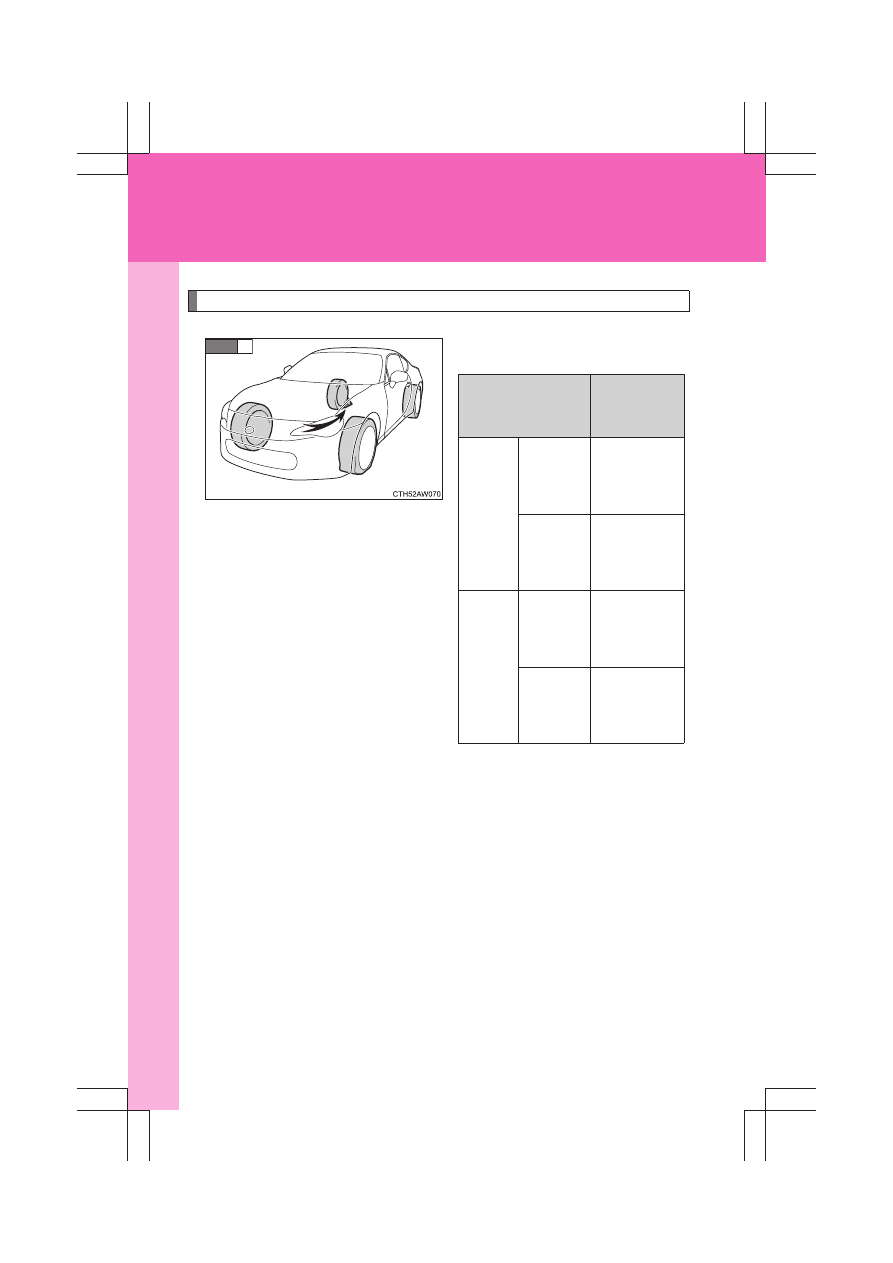Subaru BRZ (2019 year). Manual - part 29

454
5-2. Steps to take in an emergency
BRZ_U
Replacing a flat tire
Chock the tires.
STEP
1
Flat tire
Wheel
chock posi-
tions
Front
Left-
hand
side
Behind the
rear right-
hand side
tire
Right-
hand
side
Behind the
rear left-
hand side
tire
Rear
Left-
hand
side
In front of
the front
right-hand
side tire
Right-
hand
side
In front of
the front
left-hand
side tire